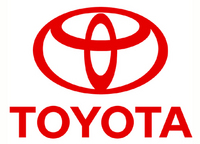Toyota Ranks Highest in Retaining New-Vehicle Buyers for a Second Consecutive Year: JD Power Report
 |
While Industry-Wide Retention Rates Remain Stable, A Few Nameplates Have Demonstrated Considerable Growth in the Past Five Years
WESTLAKE VILLAGE, CA - December 7, 2007: Toyota leads the automotive industry in retaining the highest percentage of new-vehicle purchasers for a second consecutive year, according to the J.D. Power and Associates 2007 Customer Retention Study(SM) released today.
Now in its fifth year, the study measures the percentage of new-vehicle buyers and lessees who replace a previously purchased new vehicle with another from the same nameplate.
Improving by nearly one percentage point from 2006, Toyota (64.6%) leads the customer retention rankings, followed by Lexus (63.0%) and Honda (62.8%). Each brand achieves the same rank position in 2007 as in 2006.
"Toyota's high customer retention rate is particularly notable, considering that new-vehicle sales have declined in the past year," said Neal Oddes, director of product research and analysis at J.D. Power and Associates. "Toyota maintains its high retention rates by providing high-quality vehicles and service to its existing customers, which in turn generates favorable word-of-mouth recommendations that attract new customers."
Customer retention rates have remained stable in the industry since 2003 at approximately 49 percent. However, individual nameplates have incurred substantial gains and losses within the past five years. Most notable are Suzuki, which improves by 19 percentage points, and Mazda, up 9 percentage points since 2003.
Suzuki's five-year gain in customer retention is the largest since the study's inception in 2003. The study identifies increased cargo capacity and higher resale value as the main reasons for Suzuki's improvement.
Mazda's improvements to the styling and quality of its product line have helped to elevate their retention rates. In particular, the study finds that better safety features, fuel economy and seating arrangements have led to Mazda's five-year gain.
"The improvements that Suzuki and Mazda have made in vehicle appeal and quality have paid off in steady increases in their customer retention rates during the past five years, indicating that they have also been successful in changing customer perceptions of their vehicles, which can be a daunting task," said Oddes. "Typically, when a brand introduces improvements to its product line, it takes some time for customer perceptions to improve accordingly, particularly if there are negative perceptions to overcome. By implementing effective service programs that provide customers with positive experiences, brands can change customer perceptions more quickly."
Customer retention may become even more important to automakers in the coming years, as new-vehicle sales between 2007 and 2014 are expected to increase by only 8 percent, or about 1.2 million units.
"Competition for a dwindling number of new-vehicle buyers will likely intensify in the next seven years, meaning that brands will need to retain more of their existing customers in order to increase, or even maintain, market share," said Oddes. "In addition, it is approximately four times more costly to attain a new customer than it is to retain an existing one, so in the face of a very competitive new-vehicle market, a strong focus on customer retention becomes particularly important."
The 2007 Customer Retention Study is based on responses from 169,017 new-vehicle buyers and lessees, of which 101,860 replaced a vehicle that was previously acquired new.
2007 Make Retention Rates
Toyota 64.6%
Lexus 63.0%
Honda 62.8%
BMW 58.0%
Chevrolet 56.8%
Mercedes-Benz 56.6%
Ford 52.9%
Cadillac 52.8%
Subaru 51.2%
Hyundai 50.9%
Industry Average 48.8%
Nissan 47.3%
GMC 45.7%
Saturn 45.7%
HUMMER 44.0%
Lincoln 43.0%
Jeep 41.8%
Porsche 41.6%
Acura 41.1%
Audi 40.8%
Dodge 40.1%
Suzuki 39.6%
Buick 37.8%
Mercury 35.6%
Infiniti 33.6%
Saab 33.5%
Volvo 33.0%
Kia 32.8%
Volkswagen 32.5%
Chrysler 31.9%
Mitsubishi 31.7%
Land Rover 31.1%
Mazda 31.1%
Scion 30.8%
Pontiac 27.8%
Jaguar 24.5%
MINI 21.1%
Isuzu 1.6%
Base: The percentage of customers who replaced a vehicle previously purchased new and acquired a new vehicle of the same make.


